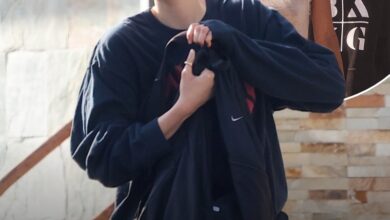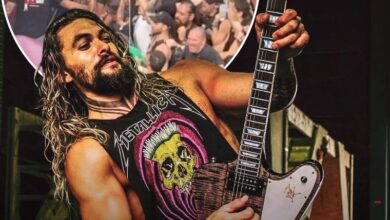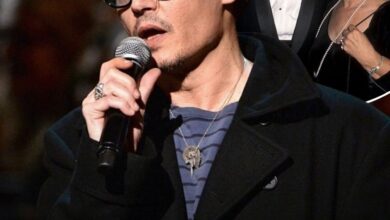James Joyce to Albert Camus: Inside Marilyn Monroe’s Extensive Personal Library
OPINION: This article may contain commentary which reflects the author's opinion.
Marilyn Monroe—the ultimate blonde bombshell to the public eye—was long underestimated, her intelligence overshadowed by the Hollywood stereotype she so expertly played. But beneath the glamour, the siren smile, and the iconic pout, Monroe harbored a deeply intellectual side, revealed most clearly through her extensive personal library.
For decades, Monroe was typecast as the “dumb blonde,” a persona she crafted with savvy precision, fully aware of the industry’s expectations. She wielded her image like a weapon, playing the roles Hollywood fed her with a meta-awareness that added layers to even her most seemingly superficial characters. Her portrayal of Lorelei Lee in Gentlemen Prefer Blondes is a prime example—beneath the ditzy exterior lay a knowing wit that subtly poked fun at the very stereotype she embodied.
The Secret Reader
Monroe once wrote in her diary, “I restore myself when I’m alone,” and reading was a key part of that restoration. Between takes on film sets, she was known to retreat quietly with a book, often tackling challenging works that many literature students find daunting.
When her belongings were auctioned by Christie’s in 1999, what emerged was a portrait of a woman far removed from the shallow caricature so often associated with her. Marilyn’s personal library contained over 400 books, amassed over the years in her Brentwood home.
A Library of Classics—and Surprises
Her collection boasted American literary giants such as F. Scott Fitzgerald’s The Great Gatsby and Tender Is the Night, Mark Twain’s Adventures of Huckleberry Finn, and Tennessee Williams’ A Streetcar Named Desire, the latter marked with her own handwritten notes. She owned numerous works by Ernest Hemingway and D.H. Lawrence—who appears to have been an early favorite.
Monroe’s library also included poetry from William Blake, Shelley, and Robert Browning, alongside writings by Oscar Wilde. Yet it was the more unexpected titles that reveal her curiosity and intellectual depth: Beat Generation works like Jack Kerouac’s On the Road, experimental poetry by Walt Whitman and Rainer Maria Rilke, and psychological texts by Sigmund Freud.
Philosophical explorations were also present, with existentialist and nihilistic works by Albert Camus and even James Joyce’s famously complex Ulysses, a book notorious for its difficulty and depth.
A Mind Marked in Margins
What truly set Monroe’s collection apart—and made it so valuable at auction—were the handwritten notes, underlinings, and margin scribbles that peppered many volumes. These personal annotations offered glimpses into her thoughts and reflections, affirming the intelligent, engaged mind behind the Hollywood icon.
Her library spanned a wide array of genres and subjects: from classic Russian novels to French philosophy, from biblical studies to modern plays. Titles ranged from the whimsical, like How To Travel Incognito by Ludwig Bemelmans, to profound explorations of human nature, like Erich Fromm’s The Art of Loving and Kahlil Gibran’s The Prophet.
Highlights from Marilyn Monroe’s Library
-
Let’s Make Love by Matthew Andrews
-
How To Travel Incognito by Ludwig Bemelmans
-
To The One I Love Best by Ludwig Bemelmans
-
Thurber Country by James Thurber
-
The Fall by Albert Camus
-
Marilyn Monroe by George Carpozi
-
Camille by Alexander Dumas
-
Invisible Man by Ralph Ellison
-
The Boston Cooking-School Cook Book by Fannie Merritt-Farmer
-
The Great Gatsby by F. Scott Fitzgerald
-
From Russia With Love by Ian Fleming
-
The Art Of Loving by Erich Fromm
-
The Prophet by Kahlil Gibran
-
Ulysses by James Joyce
-
Stoned Like A Statue: A Complete Survey Of Drinking Clichés by Howard Kandel & Don Safran (intro by Dean Martin)
A Legacy Beyond the Blonde Bombshell
Marilyn Monroe’s book collection dismantles the outdated stereotype that haunted her during her life. It reveals a woman who was thoughtful, introspective, and intellectually hungry—someone who found refuge and strength in literature. In today’s world, where women are celebrated for both beauty and brains, Monroe’s library stands as a testament to her enduring complexity and brilliance.
Behind the camera-ready smile was a fiercely curious mind—one that challenged the simplistic roles offered to her and left behind a literary legacy worthy of admiration.



